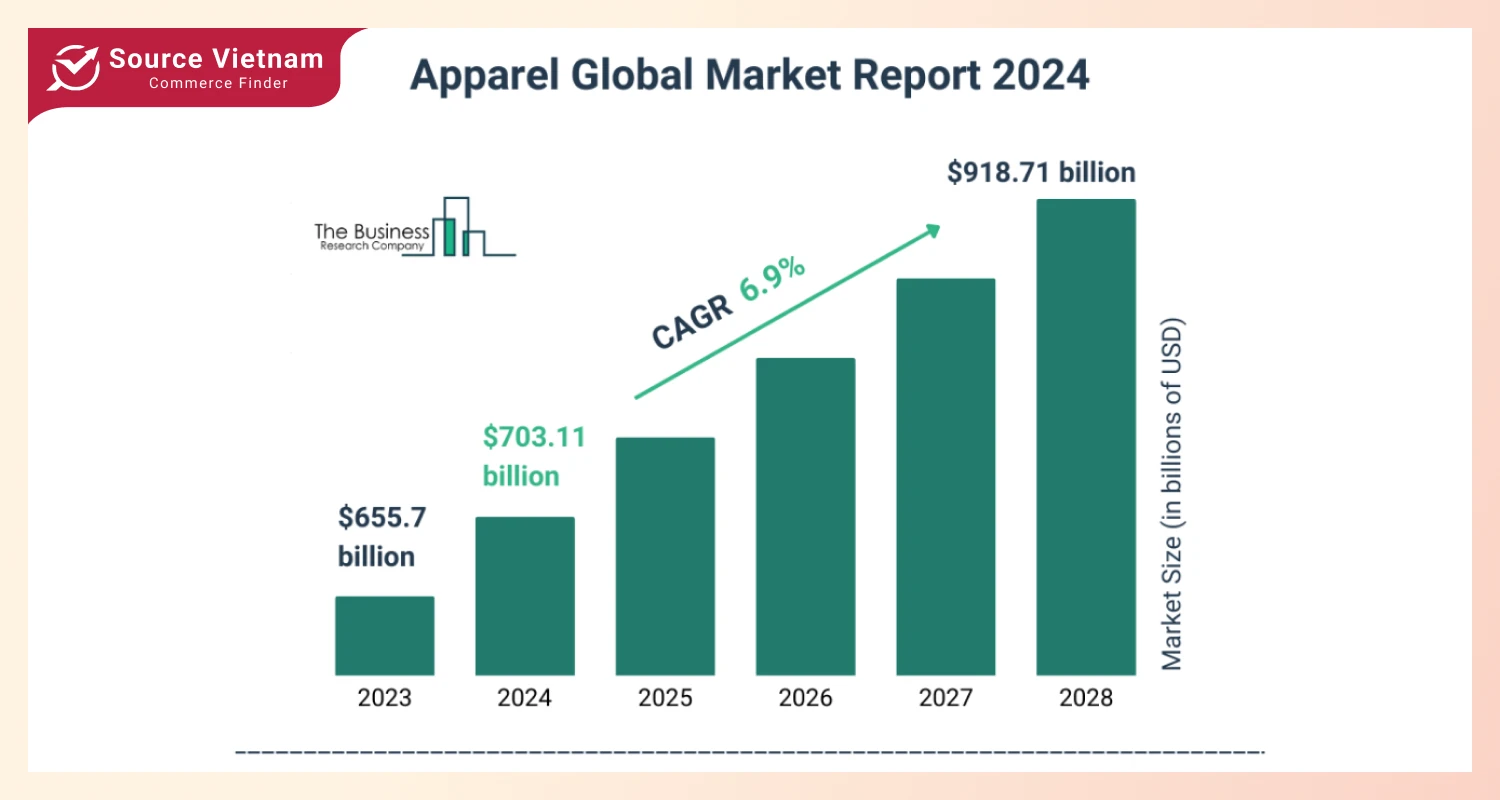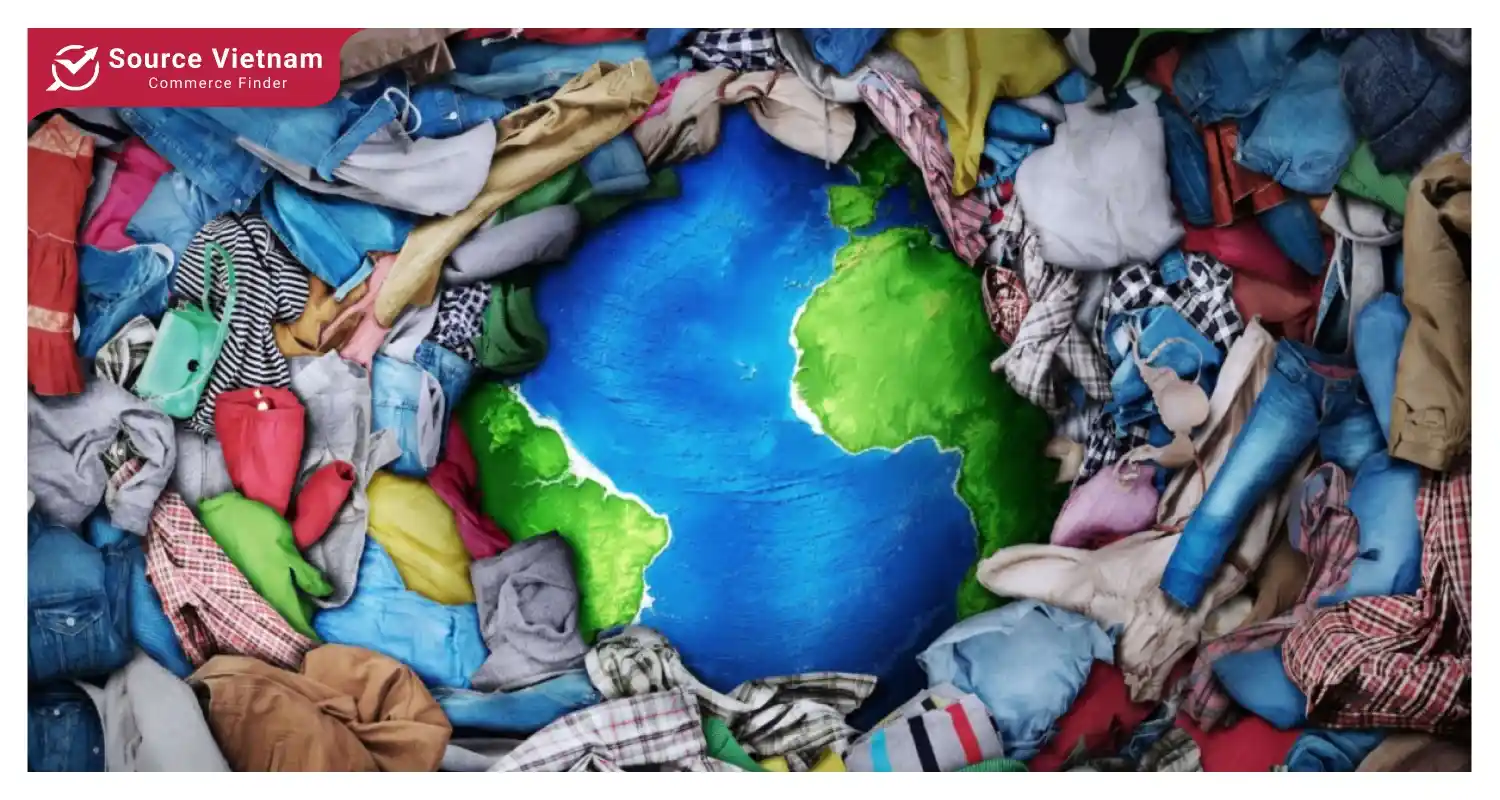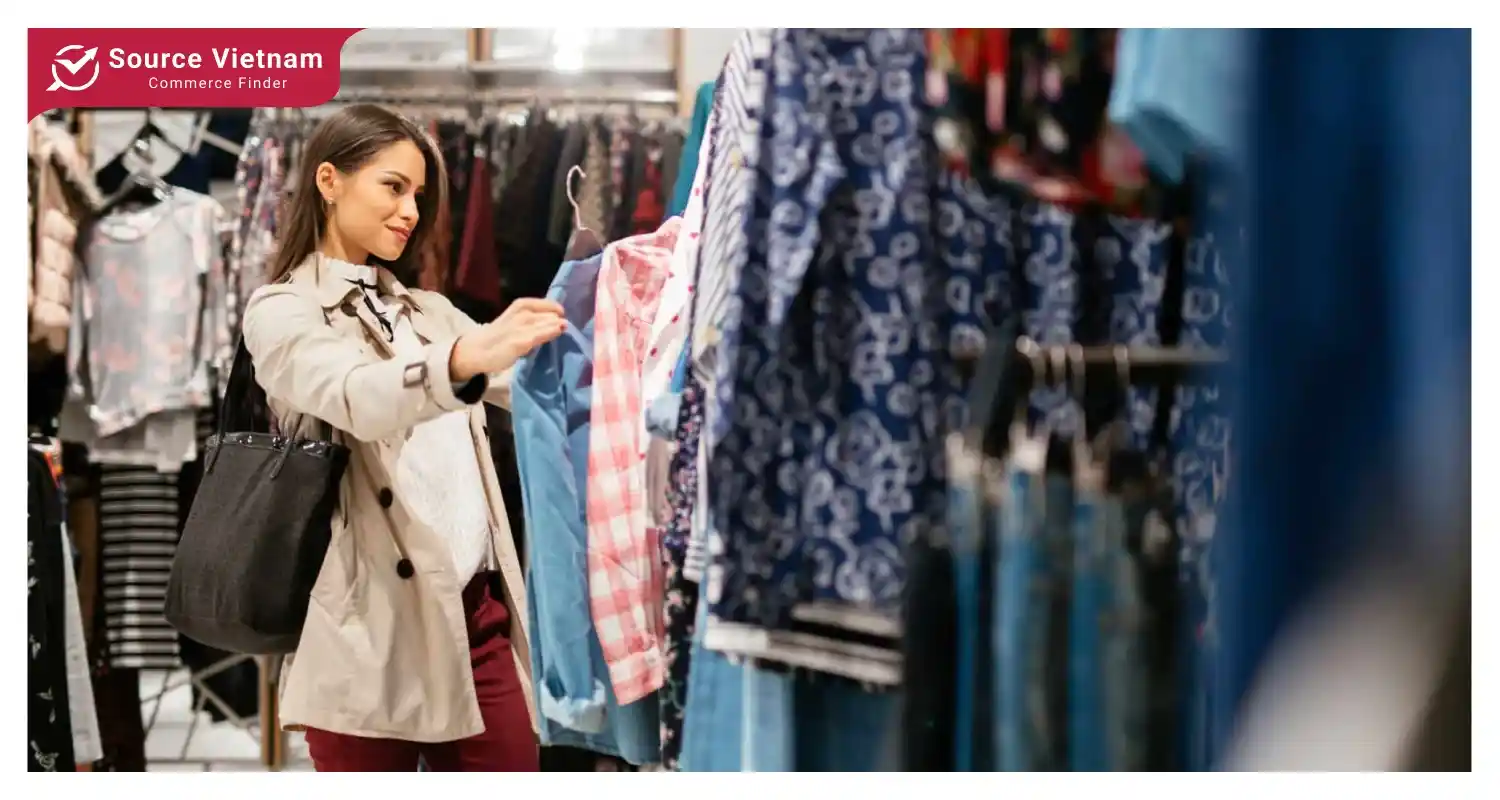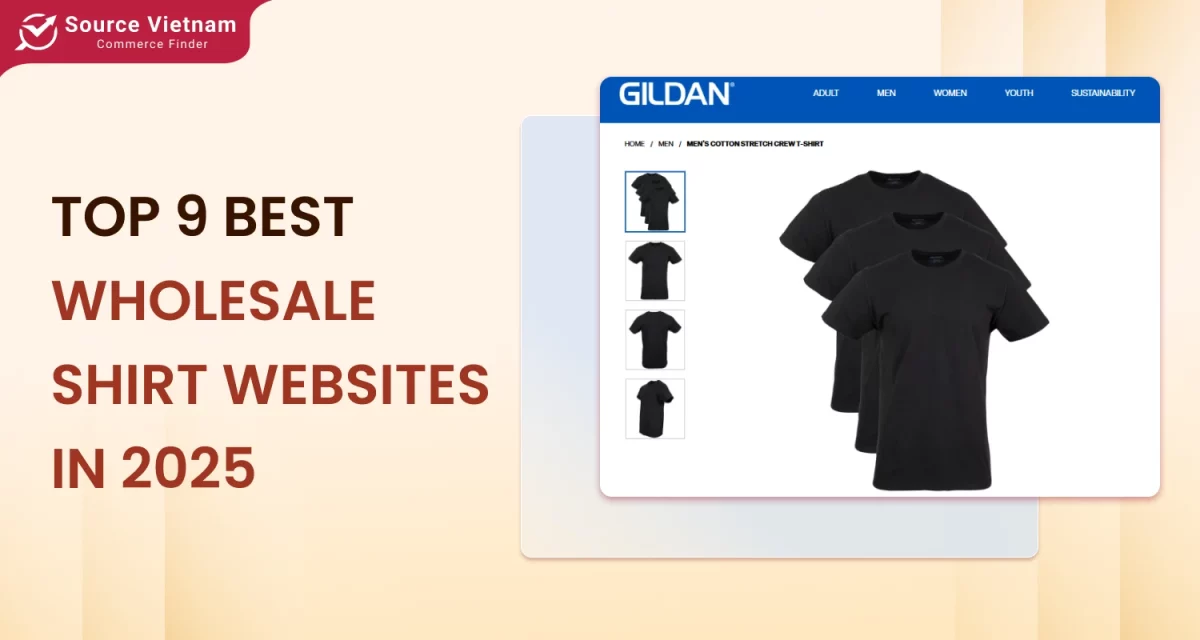Insight:
- The global apparel market is projected to generate $918.71 billion, at 6.9% compound annual growth.
- Online sales, virtual fitting rooms, AI design, and blockchain in fashion business have been managed and utilized to enhance supply chain and consumer relationship.

The world of fashion is rapidly changing as customers’ perceptions are shifting, new technology is developed, and e-commerce is becoming more accessible. This allowing the market to expand at an impressive compound rate. There is much information in this article regarding the present market size and its expected growth. It also covers the major parts form the market, how these parts interact and influence the industry, which is essential for companies looking to penetrate the market.
Market overview
The apparel industry spans a vast ocean of clothing types and fibers. The main segments include women’s, men’s, and kids’ wear – each contributing to the overall expansion of the global market. The apparel is also defined according to fiber types such as man-made fiber, cotton, animal fiber, vegetable fiber, and sold online and offline.

In 2024, the global apparel market is likely to reach a size of $703.11 billion and is forecasted to reach $918.71 billion by 2033, growing at a CAGR of 6.9%. Historical data taken between 2018 and 2023 reveal steady growth. This spearheaded largely by increasing consumer expenditure on fashion, rising e-commerce adoption, and a shift towards personalized shopping experiences.
Key market segments and subsegments
The market is segmented across several categories to cater to diverse consumer needs:
By type
- Women’s Wear: Dresses, skirts, trousers, blouses, sportswear, swimwear, nightwear, coats, jackets, and suits
- Men’s Wear: Shirts, trousers, jerseys, blazers, nightwear, t-shirts, and outerwear
- Kids’ Wear: Infant and toddler clothing, as well as young children’s apparel
By fiber
- Man-Made Fibers
- Cotton-Based Fibers
- Animal-Based Fibers
- Vegetable-Based Fibers
By distribution channel
- Offline Sales: Traditional retail stores
- Online Sales: E-commerce platforms and direct-to-consumer models
With these broad segments, businesses can effectively target specific consumer groups and cater to varying fashion needs across global regions.
Regional and country market scope
Asia-Pacific is poised to hold a significant share of the market, followed by Western Europe and North America. This region is a major growth driver alongside disposable income increases, expanding retail networks, and consumer enthusiasm for fast fashion. Countries with substantial contributions to the apparel market include USA, China, India, Japan, Germany, UK, Australia, South Korea, and Canada.

Other notable markets include Brazil, Russia, UAE, Nigeria, Egypt, and France. This diversity provides opportunities for growth as different regions demand various types of apparel products and shopping experiences.
The impact of e-commerce on the apparel industry
The online shopping boom is the vital engine behind the overall movement in an upward direction for the apparel market. E-commerce solutions, in turn, help businesses. It allows those in the industry to appeal to a wider customer base than ever before and take in revenue outside conventional geographic borders.
Small manufacturers in India, for instance, can now explore global markets, adding more to their growth while decreasing dependence upon domestic demand.
E-commerce also plays a significant role in influencing the consumer’s lifestyle. In 2021, 82% of all citizens in England made at least one online purchase. This is highest with online shopping in any European nations.
E-commerce is accounting for 30% of the retail industry in England and revenues fueled to $120 billion. This trend shows no signs of stopping, with the shift toward digital transformation and changing consumer behavior likely still to drive the growth in the coming years.
Technological trends shaping the apparel market
The apparel industry is at the forefront of technological innovation, which plays a crucial role in maintaining competitiveness and meeting evolving customer expectations. Several key technologies are transforming the market:

- Blockchain technology: Ensures supply chain transparency and intellectual property protection.
- AI and machine learning: Predicts emerging fashion trends, helping brands design popular styles while minimizing waste.
- IoT (Internet of Things): offers new innovative products that improve customer experiences through smart apparel solutions.
- AR and VR shopping: Augmented reality and virtual reality facilitate humane functions wherein customers may see their clothes before purchasing them. For instance, Walmart’s Zeekit technology enables a virtual fitting room in which users try outfits on digitally, which helps the consumer feel more comfortable in purchasing items online.
COVID-19 impact and market recovery
The international apparel market was largely closed down by the infectious coronavirus. It was further damaged by lockdowns in various countries that crippled supply chains and slashed consumer purchasing.
Throughout the year 2020 and the current year, COVID-19 has brought the industry to a near standstill because production activities were shut down due to the pandemic. However, the industry is gradually coming back after adjusting to the covid-19 related shifts. Companies are constructing resilient source chains, prioritizing e-commerce and performance wear to cater to new customer requirements.
Innovations in apparel manufacturing
Apparel manufacturers are adopting novel methods of production with an aim to increase efficiency and reduce cost. One such trend is the application of computerized embroidery systems; these systems are used to act as an automation to certain elements of design, hence reducing manual intervention.
Such systems are capable of producing fine patterns such as sequins, appliqué, and chain stitch embroidery, enabling streamlined production of high-quality apparel.
Major players in the global apparel market

Several well-known companies dominate the apparel market, leveraging brand recognition and innovative products to stay ahead of the competition. Key players include:
- Nike
- Adidas
- H&M
- PVH Corp
- VF Corporation
- Levi Strauss & Co.
- Kering
- Ralph Lauren
- Under Armour
- Uniqlo
These actions are being taken by those companies to hold that market share and earn the growth opportunities.
Future outlook: opportunities and challenges
The global apparel market shall unroll multiple avenues for the enterprises willing to take the other turn into digital transformation, sustainable practices, and consumer-centric innovations. The industry shall take shape with the growth of athleisure, activewear, and a need for personalized products. Threats will continue like any other-competition that is very intense and a fast-tracked journey to sustainable and ethical sourcing practices aligned with changing consumer expectations.
Online Commerce will be the main driver, and offering niche brands a chance to focus on narrowly defined customer segments will provide them with further opportunities to cut costs. Further, ideas like AI-powered design tools and virtual fitting rooms will bring forth a completely new experience of interactive and personalized shopping.
Conclusion
The global apparel industry is set for continued expansion, fueled by eCommerce, technological advances, and shifts in consumer behavior.
With projections to reach $918.71 billion by 2033, the sector is embracing AI, blockchain, and virtual fitting rooms to streamline operations and meet evolving customer expectations. This dynamic landscape presents immense growth opportunities for companies that adopt sustainable practices and digital transformation. It allows them to connect with a wider, tech-savvy audience.

















